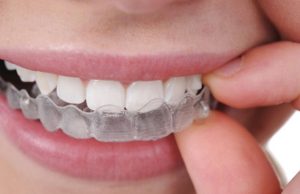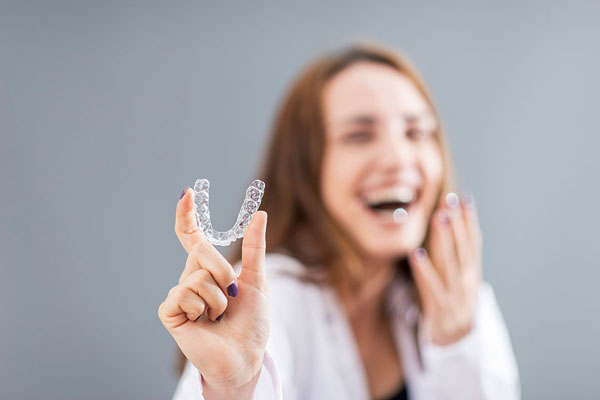Madison Dental Care’s Advanced Invisalign Process Technology
iTero Element 5 Digital Scanning Revolution
Madison Dental Care features the iTero Element 5, a state-of-the-art digital scanning system that revolutionizes the impression-taking phase of the Invisalign process. This advanced dental technology eliminates the need for messy, uncomfortable traditional impressions that require biting into putty-like materials.
The iTero scanner streamlines the early stages of your Invisalign process by using a handheld wand to capture precise digital images of your teeth and gums. These images are instantly processed to create a detailed 3D model that appears on our computer screen in real-time, allowing you to see your teeth from angles you’ve never seen before.
3D Cone Beam CT Integration
Our Madison dental office is equipped with an on-site 3D Cone Beam CT Scanner, making us one of the few practices in the area with this revolutionary technology integrated into our Invisalign process. This advanced imaging system provides three-dimensional views of your teeth, jaw, and surrounding structures with remarkable clarity and detail.
For complex Invisalign cases, 3D imaging helps us assess challenging situations and plan treatment with unprecedented precision. We can visualize the position of tooth roots, evaluate bone density, and identify any anatomical considerations that might affect your treatment process. This comprehensive view allows us to anticipate potential challenges and adjust treatment plans accordingly.

How Does the Invisalign Treatment Process Work?
Understanding the Invisalign process helps you know what to expect from consultation to completion. This step-by-step approach eliminates surprises and gives you confidence throughout your treatment journey. The process is designed to be straightforward, comfortable, and convenient for busy lifestyles.
Each phase of the Invisalign process builds on the previous one, creating a comprehensive treatment plan that addresses your specific needs. From initial assessment to final results, every step is carefully planned and monitored by our experienced dental team.
Step 1: Initial Consultation with Our Madison Invisalign Doctor
Your Invisalign process begins with a comprehensive consultation at Madison Dental Care. During this visit, our dentist will evaluate your teeth, discuss your smile goals, and determine if Invisalign is the right fit for your specific situation. This initial assessment is thorough yet comfortable, setting the foundation for your entire treatment plan.
We’ll examine your bite, assess your jaw alignment, and discuss any concerns you may have about your current smile. Our team takes time to understand your lifestyle, preferences, and expectations to create a treatment approach that works best for you. This consultation phase also includes discussing treatment timelines, costs, and what you can expect throughout the process.
Step 2: Customized Treatment Plan Development
Using advanced 3D imaging technology, our dentists map out your entire Invisalign process from start to finish. This digital treatment planning shows you exactly how your teeth will move over time and what your smile will look like at completion. You’ll see a virtual preview of your results before treatment even begins.
This comprehensive planning phase allows us to identify potential challenges early and adjust the treatment approach accordingly. We can predict how long your treatment will take, how many aligners you’ll need, and what specific movements will occur during each phase of the process.
The digital treatment plan also helps us communicate clearly with you about expectations and timelines. You’ll understand exactly what will happen during each stage of your Invisalign process, giving you confidence and peace of mind as you begin treatment.
Step 3: Receiving Your Custom Invisalign Clear Aligners
Once your treatment plan is finalized, your custom clear aligners are manufactured specifically for your teeth using precise digital specifications. Each set of aligners represents a different stage of your treatment, with slight modifications designed to continue moving your teeth closer to their final positions.
You’ll receive multiple sets of aligners at once, typically enough for six to eight weeks of treatment. This allows you to progress through your treatment at home, switching to the next set according to our dentist’s instructions. Each aligner is numbered and dated to help you stay on track with your treatment schedule.
The aligners are made from smooth, comfortable plastic that fits snugly over your teeth. They’re virtually invisible when worn, allowing you to continue your normal activities without drawing attention to your orthodontic treatment.
Step 4: Wearing Your Invisalign Aligners

The active phase of your Invisalign process requires wearing your aligners for 20 to 22 hours per day for optimal results. You’ll only remove them to eat, drink anything other than water, brush your teeth, and floss. This consistent wear time allows your teeth to move gradually and predictably according to your treatment plan.
Each set of aligners is worn for about one to two weeks, depending on your specific treatment plan and our dentist’s recommendations. You’ll feel slight pressure when you switch to a new set, which indicates that your teeth are moving as planned. This sensation typically subsides within a day or two.
Regular check-in appointments with our Invisalign-trained doctors at Madison Dental Care, scheduled every six to eight weeks, allow us to monitor your progress and provide new sets of aligners. These visits also give us the opportunity to make any necessary adjustments to keep your treatment on track.
Step 5: Completing Treatment and Maintaining Results
Once you’ve worn all your prescribed aligners, your active Invisalign process is complete, and you’ll reveal your beautifully straightened smile. However, the process doesn’t end there. To maintain your results long-term, our dentist may recommend wearing a retainer, especially during sleep hours.
The retention phase is a vital part of the overall Invisalign process. Without proper retention, teeth can gradually shift back toward their original positions, potentially undoing the progress made during treatment. We’ll provide detailed instructions on retainer care and wearing schedules to help preserve your new smile.
Some patients may need refinements or additional aligners to achieve their desired results. This is a normal part of the process for certain cases and helps achieve the best possible outcome for your smile.
What Makes the Invisalign Process Different?
Predictable Treatment Planning
Unlike traditional orthodontic methods, the Invisalign process uses advanced computer modeling to predict treatment outcomes before you begin. This predictability helps set realistic expectations and allows for better treatment planning from the start.
The digital treatment planning phase shows you exactly what will happen during each stage of your process, eliminating guesswork and providing confidence in your treatment choice. You’ll know approximately how long treatment will take and what your final results should look like.
Removable Convenience
The removable nature of Invisalign aligners sets this process apart from traditional braces. You can eat all your favorite foods without restrictions, maintain your normal oral hygiene routine, and remove aligners for special occasions when needed.
This flexibility makes the Invisalign process more compatible with adult lifestyles and professional requirements. You won’t need to avoid certain foods or struggle with cleaning around fixed appliances throughout your treatment. This benefits both your everyday life and your oral health.
Comfortable Teeth Straightening Treatments
The Invisalign process prioritizes patient comfort throughout treatment. The smooth plastic aligners won’t irritate your cheeks, lips, or gums like metal braces can. There are no wires to poke or brackets to come loose during the process.
Most patients find the Invisalign process more comfortable than they expected, with only mild pressure sensations when switching to new aligners. This comfort factor helps with treatment compliance and overall satisfaction.
Frequently Asked Questions



